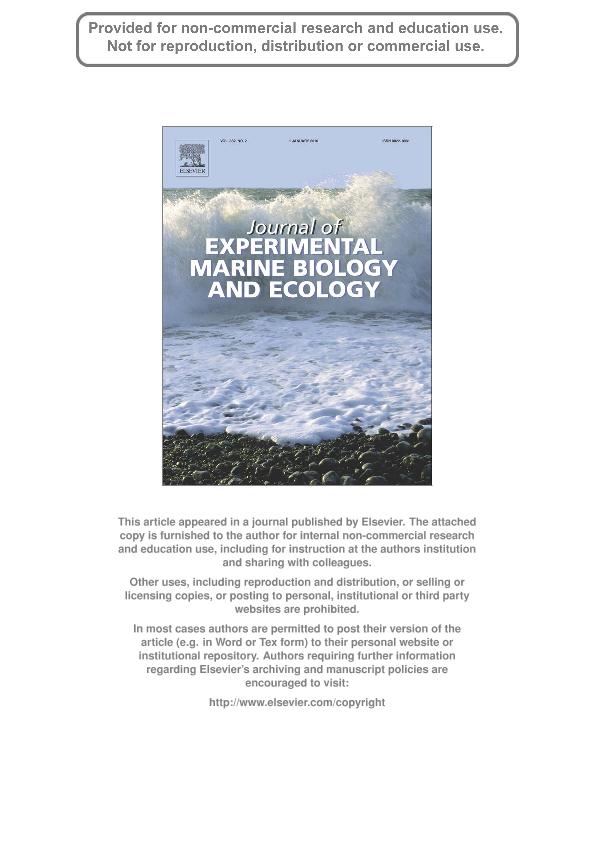Artículo
Effect of the substratum in the recruitment and survival of the introduced barnacle Balanus glandula (Darwin 1854) in Patagonia, Argentina
Fecha de publicación:
01/2010
Editorial:
Elsevier Science
Revista:
Journal of Experimental Marine Biology and Ecology
ISSN:
0022-0981
Idioma:
Inglés
Tipo de recurso:
Artículo publicado
Clasificación temática:
Resumen
The barnacle Balanus glandula was introduced in Argentina in the 1970s, and today it dominates the high intertidal level in most Argentinean rocky shores. The aim of this work was to evaluate the effect of the type of substrata and intertidal height on a population of Balanus glandula by conducting field surveys and one-year field experiments in which we combined different substrata (hardness: hard and soft, and texture: smooth and rough) at two intertidal heights (mid and high). In natural populations, the highest density of adults and recruits occurred on soft-rough substratum and in the high intertidal. The different textures were important only on the soft substrata and high intertidal, and the density of barnacles of the soft-rough substrata was higher than soft and smooth ones. The most suitable experimental substratum was the soft-rough of the high intertidal, which had the highest recruitment, survival and final density of barnacles at the end of the experiment. In contrast, the hard and smooth of the high and middle intertidal were the least suitable in all cases. Although the recruitment of B. glandula occurred throughout the year, it was higher in the high intertidal, and it showed a recruitment peak in the winter and a second in the summer. While most studies on this barnacle investigated the effects of granite or other volcanic hard substrata, our study also focused on soft substrata. The effects of soft substrata are particularly important because soft sedimentary rocks characterise the southern Atlantic coast of South America and the presence of soft rocks appears to optimize the success of Balanus glandula.
Palabras clave:
Balanus Glandula
,
Exotic Species
,
Recruitment
,
Rocky Shores
Archivos asociados
Licencia
Identificadores
Colecciones
Articulos(CCT-CENPAT)
Articulos de CTRO.CIENTIFICO TECNOL.CONICET - CENPAT
Articulos de CTRO.CIENTIFICO TECNOL.CONICET - CENPAT
Citación
Savoya, Veronica; Schwindt, Evangelina; Effect of the substratum in the recruitment and survival of the introduced barnacle Balanus glandula (Darwin 1854) in Patagonia, Argentina; Elsevier Science; Journal of Experimental Marine Biology and Ecology; 382; 2; 1-2010; 125-130
Compartir
Altmétricas




